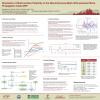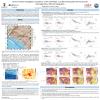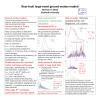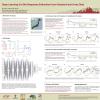Poster #206, Ground Motions
3D Simulation of Near Fault Ground Motions for the 2019 M7.1 Ridgecrest, CA Earthquake
Poster Image:

Poster Presentation
2020 SCEC Annual Meeting, Poster #206, SCEC Contribution #10405 VIEW PDF
ets the lowest Vs at 400 m/s, which yield an upper frequency limit of 4 Hz for the simulations. Initial simulations are run in both SCEC 3D Community Velocity Models: cvmsi and cvmh. We compare our simulations to the ground-motion observations using the standard RotD50 spectral acceleration goodness-of-fit criteria described by Goulet et al. (2015). Preliminary results indicate that the smallest misfits are produced by ruptures having a down-dip width of 14 km and average rupture speed of 60% of local Vs. Additionally, we find that the relatively thick (350 m) near-surface low-velocity layering in cvmh produces strong amplification in the simulations up to periods of 3 s that are not consistent with the observations. While simulations in cvmsi provide a good match to the data, the relatively high surface velocities (Vs of 1500 to 2500 m/s) in this model are not realistic. To address this, we created a modified version of cvmsi (denoted cvmsi-m), which has a relatively thin (100 m) near-surface low-velocity layer designed to match available site profile and Vs30 data (Yong et al., 2013). Simulations in cvmsi-m still provide a good match to the ground-motion recordings while also maintaining consistency with observed near-surface seismic velocity data.
SHOW MORE
SHOW MORE



















































